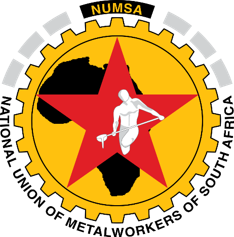One of the most radical trade union movements, a socialist affiliate of Cosatu and a dependable ally of the working class, is celebrating 25 years of existence.
Numsa has made tangible gains and suffered fewer losses in its perpetual class war against private owners of the means of production.
To make a thorough analysis of the path taken from Numsa’s birth, it would be proper to analyse the difficult routes our forebears took leading to the current state of the union.
Roots of the National Union of Metalworkers of South Africa
Numsa was born in May 1987 as the product of a merger of six unions, namely Mawu, Micwu, Naawu, Ummawosa, Gawu and TGWU, which organised workers in predominantly the motor and metal-related sectors.
It also drew inspiration from Cosatu’s historic mobilising slogan: one sector, one union and one industry, one federation.
In line with its views on solidarity, globally the union is affiliated to the IMF, ICEM and WFTU, which consolidates its resolute position as a strategic ally in the enhancement of internationalism.
It has also drafted an international policy which was ratified and adopted in principle by the Central Committee and might be reviewed by the upcoming Ninth National Congress.
A historic clarion call to unite workers and fight exploitation
Throughout Numsa’s years of existence it has fought against and continues to denounce any form of exploitation, regardless of the level and gravity of the treatment that workers are subjected to in the workplace.
Numsa has also engaged in the struggle beyond the shop floor by becoming a vocal advocate of the working class and the poor.
An undisputed trade union formation in collective bargaining.
Currently Numsa is the only multi-industrial union that enjoys a majority in all sectors where it organises and bargains, except Eskom.
Throughout turbulent times it has managed to gain huge recognition in various collective bargaining councils, including the Metal and Engineering Industries Bargaining Council (MEIBC), the Motor Industry Bargaining Council (Mibco), the National Bargaining Forum (NBF) and the New Tyre Manufacturing Industry Bargaining Council( NTMIBC).
The principle of worker control is paramount in collective bargaining.
Among the shop stewards there are bargaining representatives who are elected in terms of the union’s constitution to provide shop-floor experience in the bargaining processes.
“The union is renowned countrywide with regard to industry transformation and possesses an abundance of talent within the bargaining arena.
This testifies to its mainstay slogan: confronting the logic of capital through collective bargaining,” said Bethuel Mokgwathe, Numsa shop steward.
The most principled and disciplined worker-controlled movement
The union is guided purely by its constitution, which espouses worker supremacy as a cornerstone of the organisation.
This is supported by its principled position of encouraging free and open debates within its structures, which strengthens worker unity on the shop floor around common problems.
“Numsa’s grass roots are the factory floor, so it is mandatory for worker leaders to call what we term ‘ear to the ground’ on a monthly basis to hear workers’ concerns on work-related and social matters.
This is in line with the provisions of the union’s constitution on the powers of shop steward committees in the plant,” said Stephen Kekana, formerly of Mawu and now a Numsa shop steward.
Growth prospects and immediate tasks
The deep-seated global capitalist crisis in First World countries has had an adverse impact on emerging economies like South Africa.
The country is also affected by bilateral trade agreements that our government enters into with western and Asian countries without taking into account the views of its social partners, particularly the unions.
Close to a million jobs were lost since 2008 and continues to shed members as manufacturing companies either close factories or shift production to countries which are not regulated by labour laws.
But the union continues to try and recruit new members and fulfil its historic mandate of defending worker’s rights in the face of such challenges.
It has set itself the target of reaching 300 000 members by the time of the National Congress in June 2012, and this can be achieved through the concerted efforts of all nine regions.
Ideological character
The teaching of Marxist-Leninist ideology has deepened among Numsa’s members.
A series of political discussion forums have been rolled out across the regions in line with long-term resolutions adopted in the union’s highest decision-making structures re-emphasising socialism as the future for our mineral-rich country.
This harmonises with the aims of our National Democratic Revolution (NDR), which seeks to transfer power and emancipate the oppressed majority – Africans in particular and blacks in general.
This implies the transfer of political, social and economic power throughout society. In this process the South African Communist Party must play a vanguard role, while the ANC provides political leadership.
The effect will be to encourage members to join the Congress Movement, to build working class power and to dampen counter-revolutionary tendencies in the working class.
Source
Numsa News No 1, April 2012
